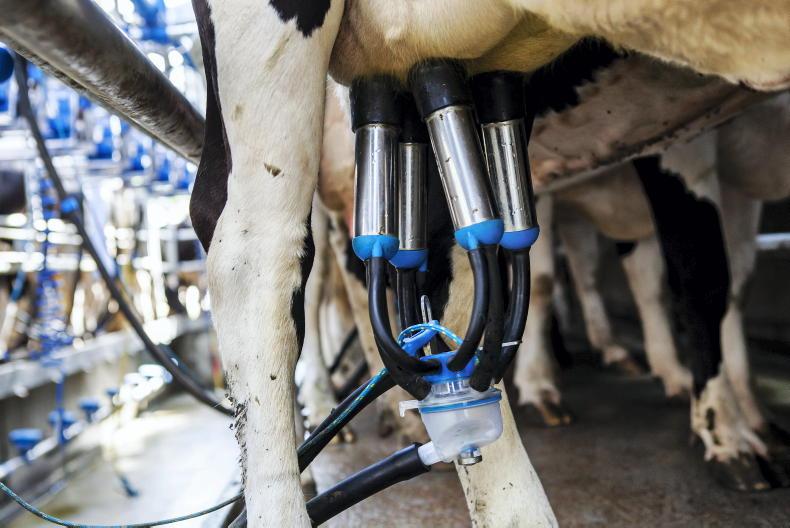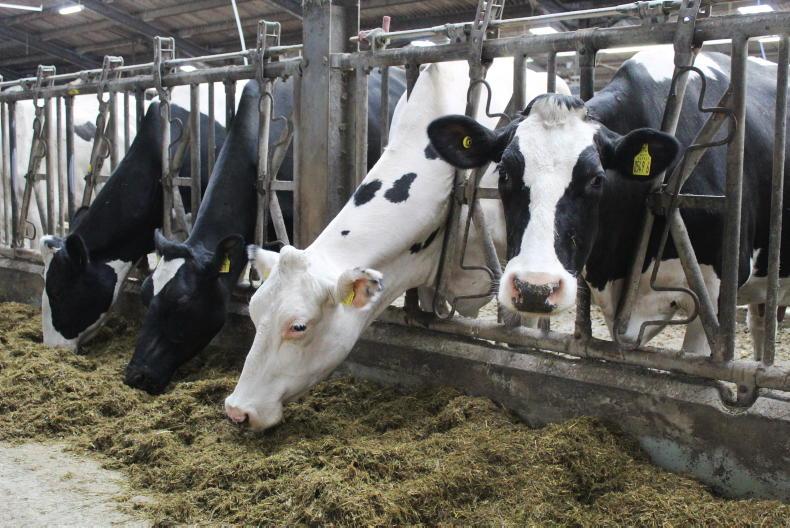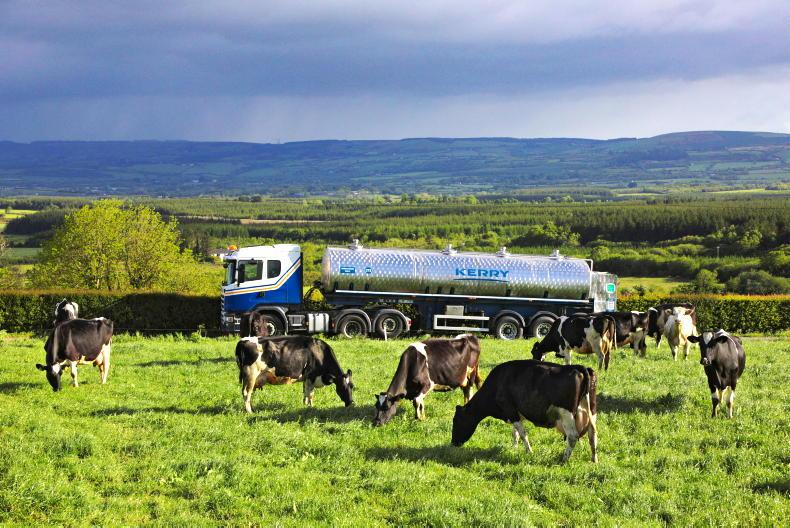On page 6 of the edition dated 11 December 2021 we published some analysis which set out what the new incentives for butterfat and protein introduced by Dale Farm, Glanbia Ireland and Lakeland Dairies might mean for suppliers.
The analysis assumed that the farmer was producing milk at 4.15% butterfat and 3.33% protein, which is understood to be in or around the average quality being supplied to Dale Farm.
Some of the other smaller milk purchasers in NI also collect milk of a similar quality.
With both Dale Farm and Glanbia Ireland increasing their base level for fat and protein, and the value of each increment, the clear message being sent to suppliers is to focus on increasing milk solids.
For those that don’t, they could find themselves worse off in future.
For example, a Dale Farm supplier at the average of 4.15% butterfat and 3.33% protein will actually have a lower income in 2024/25 if everything stays the same.
But for high solids producers (eg 4.65% fat and 3.83% protein), even if they don’t increase solids, they gain significantly more from the higher value of the increments than they lose due to increases in the base percentages for fat and protein.
No change
The Lakeland Dairies model (starting from January 2022) is different, and in the immediate example above, there is no change in income, despite having high solids milk.
Remember, in the Lakeland incentive scheme, a supplier chooses their own reference year (2018, 2019 or 2020) for fat and protein.
For every 0.01% extra fat produced, the increment is 0.029p/l and for every 0.01% protein it is 0.056p/l.
However, if we take the earlier farmer with average solids (4.15% fat and 3.33% protein), and assume they supply 650,000l annually, if they increase both constituents by 0.1% to 4.25% fat and 3.43% protein by 2024/25, there is not that big a gap across processors.
Assuming a constant milk price, the farmer would be £4,173 better off in the Dale Farm model, £5,921 if a Glanbia supplier, and £5,525 if supplying Lakeland.
But if they have high solids (4.65% butterfat and 3.83% protein), and can increase both by 0.05% to 4.70% and 3.92% in 2024/25, under the Dale Farm model they are £8,431 better off, for Glanbia it is £11,641, but for Lakeland the increase to income is only £2,762.
Where they maintain solids at 4.65% and 3.83%, the Dale Farm supplier has increased income of £5,863, with the Glanbia supplier at £8,911 with the Lakeland supplier at zero.
So it is clear that farmers who already have high solids milk are likely to be better off if they supply Dale Farm or Glanbia. For those with reasonably good solids, there might not be that big a difference across the processors.
But what about those with lower solids? The average milk quality in NI for 2020 was 4.06% butterfat and 3.30% protein. That is below the average we have assumed for Dale Farm, so it does suggest that there are a significant number of farmers who are in or around base levels each month.
For the analysis shown in the table below, we have assumed that a farmer is currently supplying milk at 3.90% butterfat and 3.19% protein.
The incomes are calculated on the basis of 650,000l being supplied annually, at a consistent base price of 33p/l.
By 2024/25, if the supplier is still producing low solids milk to either Dale Farm or Glanbia, their income will take a hit. In the case of Lakeland, given the co-op has not changed its existing base, the impact is zero.
If this supplier can increase both fat and protein by 0.1% to 4.0% and 3.29% respectively, incomes would be up at both Dale Farm and Glanbia, but the greatest increase is with Lakeland.
In fact, our analysis suggests that a Dale Farm supplier with low solids would need to get to around 4.10% butterfat and 3.35% protein to match the increased income of the Lakeland producer in this example.
The message being sent to farmers is to produce higher solids milk, and given the future environmental challenges facing the industry, that has to be the right approach.
There are obviously pros and cons with the various models being implemented by Dale Farm, Glanbia Ireland and Lakeland Dairies to incentivise higher milk solids, and each individual farmer’s view of the schemes probably depends on their own starting point.
Those with milk solids at or below the NI average are probably better off with Lakeland Dairies, while those well above the NI average will probably see a greater income lift if they are a Dale Farm or Glanbia supplier. If things were different, and sufficient processing capacity was in place, perhaps these changes might have precipitated some switching of processors by suppliers, although that in itself was a reason for co-op boards to be risk adverse around milk pricing.
Ultimately, irrespective of the new incentives for fat and protein, it is still the base milk price that will primarily dictate the bottom line on a milk cheque.
If the proponents of greater incentives for milk solids are right, and there are significant efficiencies to be had in processing, those co-ops with the highest milk solids will be in a stronger position to pay the best base price.
Read more
Glanbia lifts incentive for fat and protein
New component pricing at Dale Farm
On page 6 of the edition dated 11 December 2021 we published some analysis which set out what the new incentives for butterfat and protein introduced by Dale Farm, Glanbia Ireland and Lakeland Dairies might mean for suppliers.
The analysis assumed that the farmer was producing milk at 4.15% butterfat and 3.33% protein, which is understood to be in or around the average quality being supplied to Dale Farm.
Some of the other smaller milk purchasers in NI also collect milk of a similar quality.
With both Dale Farm and Glanbia Ireland increasing their base level for fat and protein, and the value of each increment, the clear message being sent to suppliers is to focus on increasing milk solids.
For those that don’t, they could find themselves worse off in future.
For example, a Dale Farm supplier at the average of 4.15% butterfat and 3.33% protein will actually have a lower income in 2024/25 if everything stays the same.
But for high solids producers (eg 4.65% fat and 3.83% protein), even if they don’t increase solids, they gain significantly more from the higher value of the increments than they lose due to increases in the base percentages for fat and protein.
No change
The Lakeland Dairies model (starting from January 2022) is different, and in the immediate example above, there is no change in income, despite having high solids milk.
Remember, in the Lakeland incentive scheme, a supplier chooses their own reference year (2018, 2019 or 2020) for fat and protein.
For every 0.01% extra fat produced, the increment is 0.029p/l and for every 0.01% protein it is 0.056p/l.
However, if we take the earlier farmer with average solids (4.15% fat and 3.33% protein), and assume they supply 650,000l annually, if they increase both constituents by 0.1% to 4.25% fat and 3.43% protein by 2024/25, there is not that big a gap across processors.
Assuming a constant milk price, the farmer would be £4,173 better off in the Dale Farm model, £5,921 if a Glanbia supplier, and £5,525 if supplying Lakeland.
But if they have high solids (4.65% butterfat and 3.83% protein), and can increase both by 0.05% to 4.70% and 3.92% in 2024/25, under the Dale Farm model they are £8,431 better off, for Glanbia it is £11,641, but for Lakeland the increase to income is only £2,762.
Where they maintain solids at 4.65% and 3.83%, the Dale Farm supplier has increased income of £5,863, with the Glanbia supplier at £8,911 with the Lakeland supplier at zero.
So it is clear that farmers who already have high solids milk are likely to be better off if they supply Dale Farm or Glanbia. For those with reasonably good solids, there might not be that big a difference across the processors.
But what about those with lower solids? The average milk quality in NI for 2020 was 4.06% butterfat and 3.30% protein. That is below the average we have assumed for Dale Farm, so it does suggest that there are a significant number of farmers who are in or around base levels each month.
For the analysis shown in the table below, we have assumed that a farmer is currently supplying milk at 3.90% butterfat and 3.19% protein.
The incomes are calculated on the basis of 650,000l being supplied annually, at a consistent base price of 33p/l.
By 2024/25, if the supplier is still producing low solids milk to either Dale Farm or Glanbia, their income will take a hit. In the case of Lakeland, given the co-op has not changed its existing base, the impact is zero.
If this supplier can increase both fat and protein by 0.1% to 4.0% and 3.29% respectively, incomes would be up at both Dale Farm and Glanbia, but the greatest increase is with Lakeland.
In fact, our analysis suggests that a Dale Farm supplier with low solids would need to get to around 4.10% butterfat and 3.35% protein to match the increased income of the Lakeland producer in this example.
The message being sent to farmers is to produce higher solids milk, and given the future environmental challenges facing the industry, that has to be the right approach.
There are obviously pros and cons with the various models being implemented by Dale Farm, Glanbia Ireland and Lakeland Dairies to incentivise higher milk solids, and each individual farmer’s view of the schemes probably depends on their own starting point.
Those with milk solids at or below the NI average are probably better off with Lakeland Dairies, while those well above the NI average will probably see a greater income lift if they are a Dale Farm or Glanbia supplier. If things were different, and sufficient processing capacity was in place, perhaps these changes might have precipitated some switching of processors by suppliers, although that in itself was a reason for co-op boards to be risk adverse around milk pricing.
Ultimately, irrespective of the new incentives for fat and protein, it is still the base milk price that will primarily dictate the bottom line on a milk cheque.
If the proponents of greater incentives for milk solids are right, and there are significant efficiencies to be had in processing, those co-ops with the highest milk solids will be in a stronger position to pay the best base price.
Read more
Glanbia lifts incentive for fat and protein
New component pricing at Dale Farm










SHARING OPTIONS